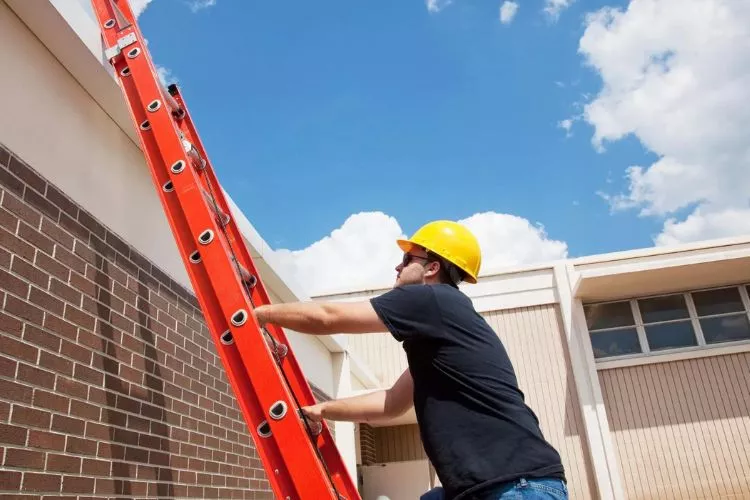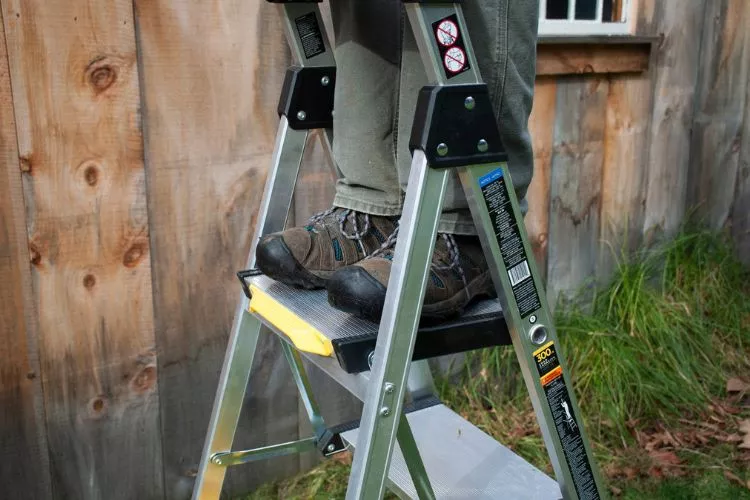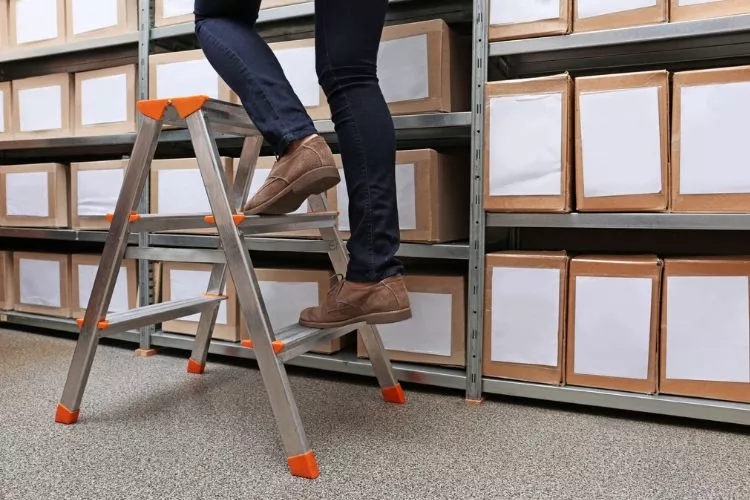Step ladders are essential tools in both professional and DIY settings, serving as a reliable means to reach heights that would otherwise be inaccessible.
Whether you’re changing a light bulb, painting a room, or conducting maintenance around your property, a step ladder is a trusty companion.
However, one common dilemma that arises is whether it’s acceptable to leave step ladders outside when not in use. So, can step ladders be left outside?
In this article, we will explore the various facets of this issue, including the types of step ladders, the materials they’re made of, and the impact of outdoor storage on their functionality and longevity.

Can Step Ladders Be Left Outside?
It is not advisable to leave step ladders outside for extended periods. Step ladders are typically designed for indoor use or for temporary outdoor tasks. Prolonged exposure to the elements, such as rain, sun, and temperature fluctuations, can lead to significant damage.
Rain can cause rust and wood rot, while the sun’s UV rays can weaken materials and compromise ladder integrity. Temperature fluctuations can result in warping and joint loosening.
If indoor storage space is limited, consider using high-quality ladder covers to protect against weather conditions. Elevating the ladder off the ground and securing it can also help minimize potential damage.
Regular maintenance, including cleaning and inspections, is essential to prolong the ladder’s lifespan when stored outdoors. However, for the best longevity and safety of your step ladder, storing it indoors is the recommended practice.
Understanding Step Ladders
Before diving into the outdoor storage debate, let’s gain a better understanding of step ladders. Step ladders come in several types, each designed for specific tasks.
These include folding step ladders, extension step ladders, and platform step ladders. The choice of ladder depends on the height you need to reach and the stability required for the job at hand.

Step ladders are typically constructed using materials such as aluminum, fiberglass, or wood. These materials are chosen for their durability and weight-bearing capacity.
The rungs or steps of the ladder are designed to provide a secure footing, ensuring safety while working at heights. Given their importance in various tasks, it’s crucial to consider how and where you store your step ladder when it’s not in use.
Outdoor Storage Considerations
Weather Conditions and Their Impact
One of the primary concerns when contemplating outdoor storage for step ladders is the impact of weather conditions. Rain, sun exposure, and temperature fluctuations can all affect the ladder’s condition.
- Rain: Step ladders are often exposed to rain when left outside. Prolonged exposure to moisture can lead to rusting, degradation of wooden components, and compromise the ladder’s structural integrity.
- Sun Exposure: The sun’s UV rays can be harsh on ladder materials. Continuous exposure to sunlight can cause fading, weakening, and even cracking of components, especially those made of plastic or rubber.
- Temperature Fluctuations: Drastic temperature changes, especially freezing temperatures, can lead to the expansion and contraction of ladder materials. This can result in warping, loosening of joints, and diminished stability.
Storage Locations
When considering outdoor storage, it’s essential to choose the right location for your step ladder. Here are two common options:
- Covered Outdoor Areas: If you have a covered patio, porch, or shed, these can serve as suitable locations for outdoor ladder storage. These areas offer some protection from the elements, reducing the ladder’s exposure to rain and direct sunlight.
- Uncovered Outdoor Areas: Placing a step ladder in an open, uncovered space exposes it to the full force of the elements. While this may be convenient, it increases the ladder’s vulnerability to weather-related damage.
Risks of Outdoor Storage
Leaving a step ladder outside for extended periods poses several risks:
- Damage to Materials: As mentioned earlier, rain, sun, and temperature fluctuations can cause damage to ladder materials. Over time, this can compromise the ladder’s safety and functionality.
- Safety Concerns: Exposure to the elements can result in wear and tear, making the ladder less stable. This can increase the risk of accidents and injuries while using the ladder.
- Long-term Durability: Step ladders are an investment, and their longevity is essential. Storing them outdoors can significantly reduce their lifespan, leading to the need for frequent replacements.
Indoor Storage vs. Outdoor Storage
Now that we understand the potential risks of outdoor storage, let’s compare it to indoor storage.

